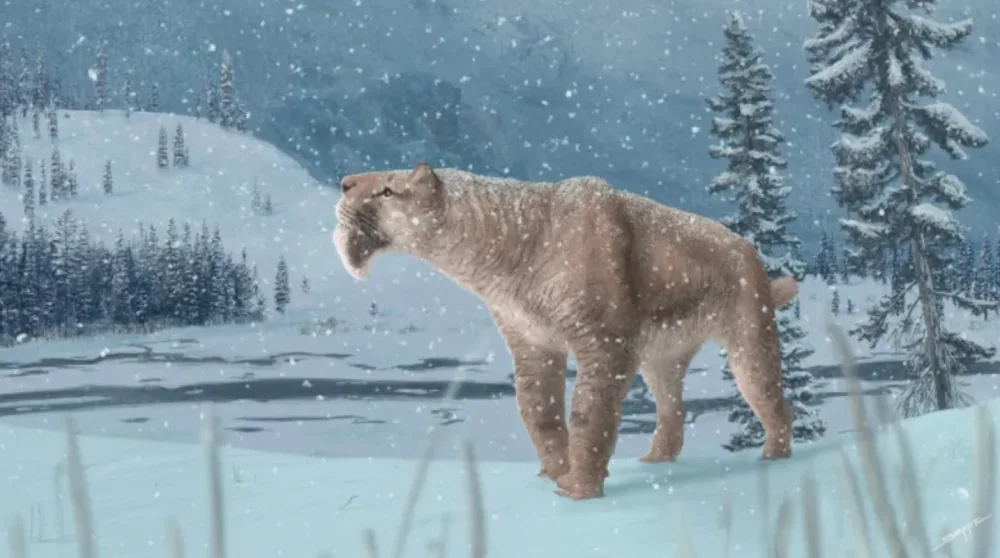
Canada's first sabre-toothed cat fossil found in Medicine Hat
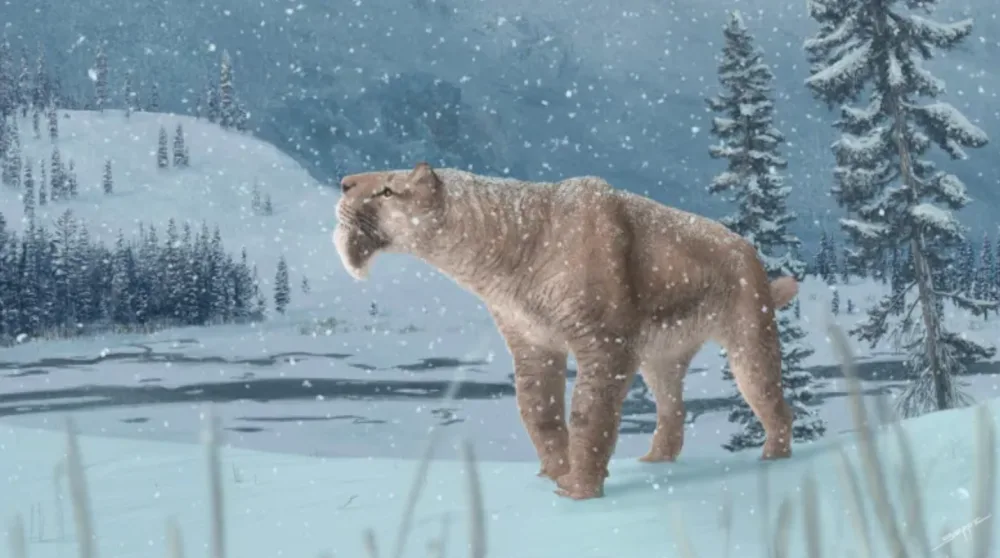
(Image: Smilodon fatalis, commonly known as the 'sabre-toothed tiger' was a huge predator during the last ice age. Scientists have now confirmed it lived in Canada at that time. Courtesy: Henry Sharpe via CBC)
During the last ice age, huge cats bigger than an African lion prowled Alberta — including the fearsome beast commonly known as the "sabre-toothed tiger," a new study shows.
The proper name for the extinct predator with foot-long, serrated knife-like canines is Smilodon fatalis.
And up until the discovery of the fossil from Medicine Hat, Alberta, the species had never been found further north than Idaho.
That's why a couple of small fossils caught Ashley Reynolds's eye as she was rummaging through the drawers at the Royal Ontario Museum in Toronto.
"What struck me is they were listed as being Smilodon from Alberta," recalled Reynolds, a PhD student in paleontology at the University of Toronto. "And I knew that Smilodon wasn't really considered to be a Canadian species."
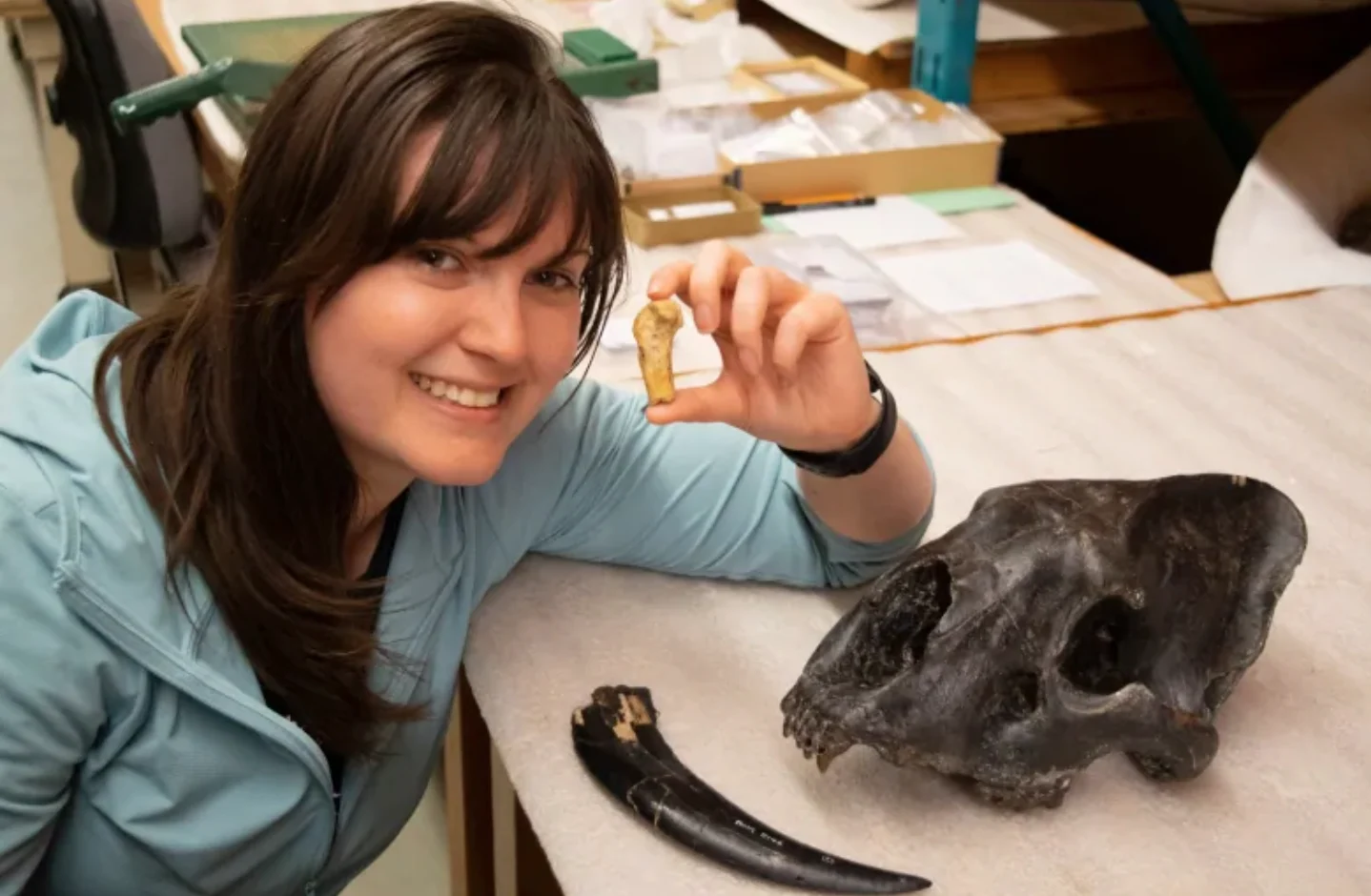
(Image: Ashley Reynolds, lead author of the new study, holds the Smilodon fatalis metacarpal from Medicine Hat, Alta. On the table are a S. fatalis skull and canine tooth from Peru. Courtesy: Danielle Dufault/Royal Ontario Museum via CBC)
The drawer was part of a trove of 1,200 specimens collected in the 1960s by University of Toronto paleontologist C.S. Churcher and his team from the bluffs along the South Saskatchewan River near Medicine Hat that had been roughly sorted but never examined in detail.
SEE ALSO: Get a close-up view of Nova Scotia's sharks
Reynolds, who was researching the growth patterns and life histories of extinct cats by looking at their bones, decided to look more carefully at what cat fossils Churcher had found so they could be used in further research.
One of the fossils labelled "Smilodon" was too small a piece to be identified.
But another, a bone from the ancient cat's right front paw, was identical other Smilodon bones from the same part of the body, and was positively identified as Canada's first Smilodon.
Reynolds and colleagues published their findings Friday in the Canadian Journal of Earth Sciences. The study was funded by the Natural Sciences and Engineering Research Council of Canada.
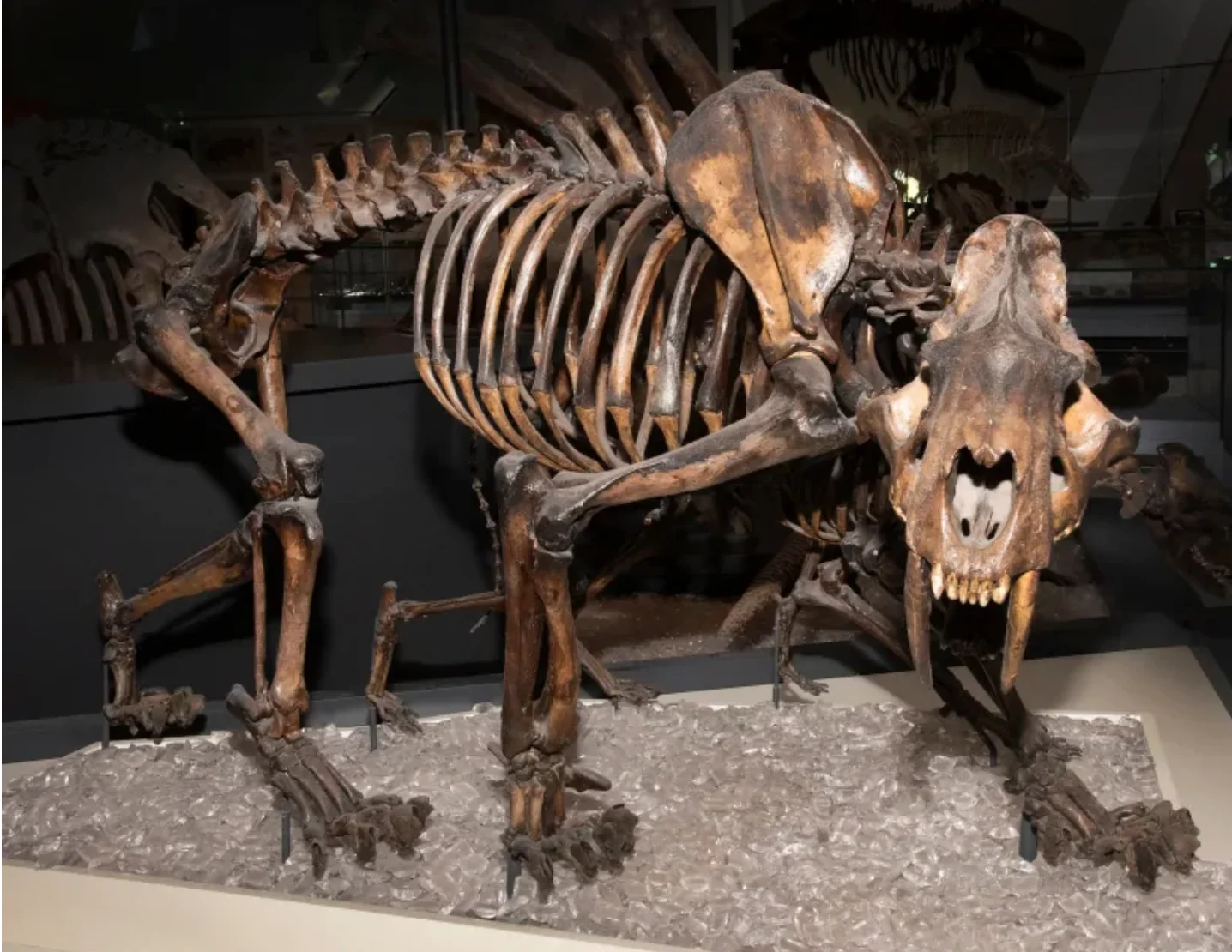
(Image: This is the sabre-toothed cat skeleton on display in the Royal Ontario Museum’s Reed Gallery of the Age of Mammals. This specimen from 1937 comes from Los Angeles's La Brea Tar Pits, which were also known as Rancho La Brea. Courtesy: Wanda Dobrowlanski/Royal Ontario Museum via CBC)
Smilodons or sabre-toothed cats are an extinct group of big cats with huge canines flattened and serrated like knife blades.
"They're literally like holding steak knives in your mouth," said Reynolds.
Their flattened shape made them fragile and prone to breaking, she added. That's probably why sabre-toothed cats had a shorter and stockier build than lions and tigers -- to better pin their prey down and prevent struggles that might break their teeth.
While Smilodon is often referred to colloquially as a "sabre-toothed tiger" — and popularized as such in The Flintstones and Ice Age — Reynolds said that's a misnomer, as sabre-toothed cats are just as closely related to housecats as tigers.
The bone found in Alberta is estimated to be 35,000 to 40,000 years old, from the Pleistocene epoch, before there were humans in the area.
At that time, what is now Medicine Hat was part of a plain teeming with herds of horses, camels and bison that cut north and south between the huge Laurentide glacier to the east and the Cordilleran ice sheet to the west.
Reynolds said Smilodon would have stalked those animals by hiding in the grass, as most big cats do today — but its killing method would have been quite different.
DON'T MISS: Giant 'frozen dragon' discovered in Alberta
While lions, tigers and leopards typically kill their prey with a neat bite to the throat that crushes or blocks their windpipe, Smilodons are thought to have sliced and gored their prey to death by biting into its throat or belly.
"And essentially what this causes is extreme hemorrhaging — a very rapid loss of blood and then eventual death," Reynolds said.
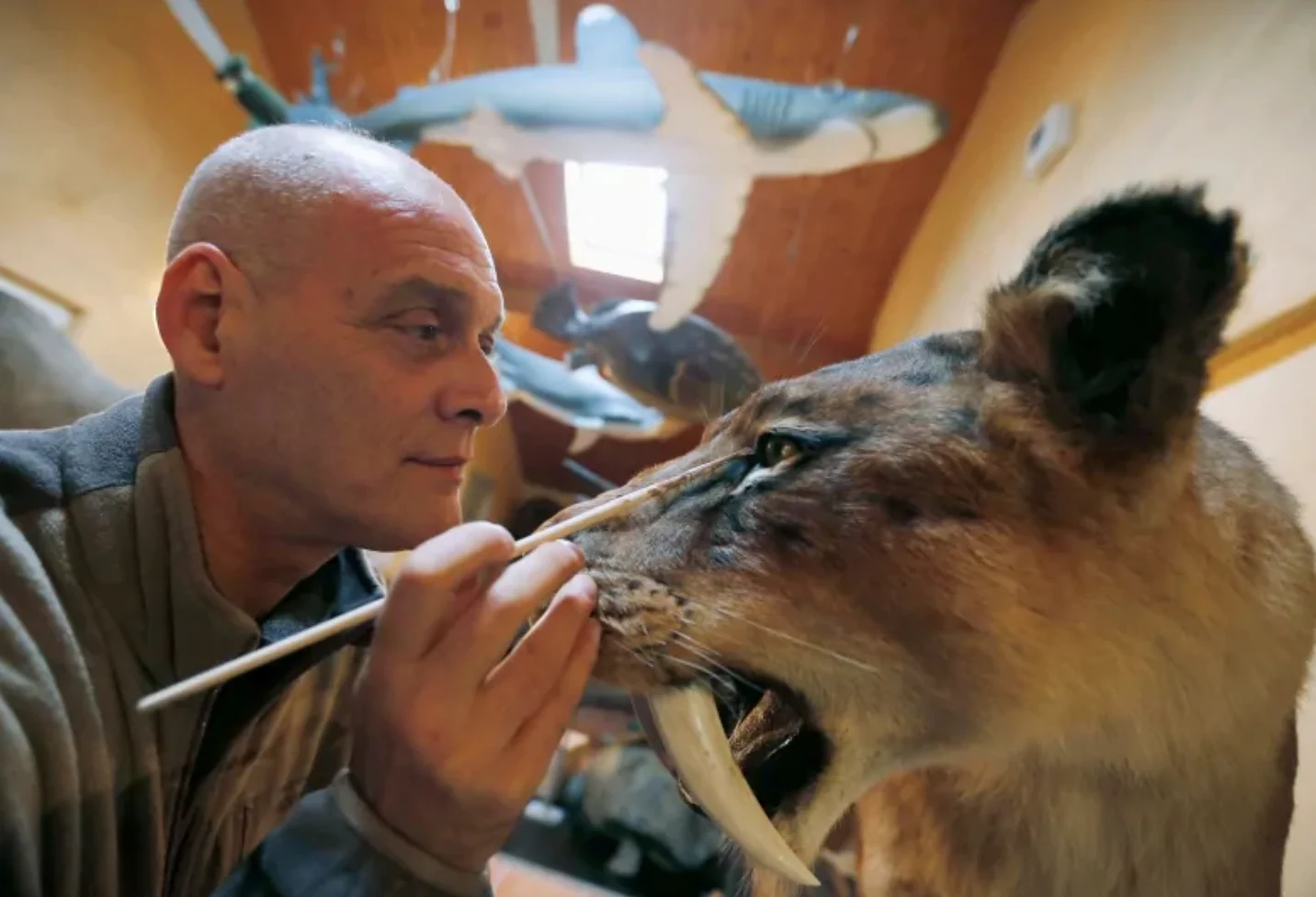
(Image: Belgian animal sculptor Emmanuel Janssens Casteels works on a replica of a Smilodon, an extinct genus of machairodont felid, in his workshop in Prayssas, France, on Dec. 3, 2014. Courtesy: Regis Duvignau/Reuters)
But local herds had more than just Smilodon to fear. Among the bones found with it were also the fossil of an American lion and one that appears to be a cave lion, although that one was too fragmentary for researchers to positively identify.
If it turns out to be a cave lion, it would be the furthest south that species has ever been found. Both those lion species are bigger than African lions — in fact, the American lion was the largest cat in North America at the time.
American lions had previously been found as far north as Edmonton, and scimitar-toothed cats, which are similar in size to African lions, have also previously been found in the area.
Reynolds also identified a lynx or bobcat among the fossils, similar to the smaller cats that still roam the area today.
In fact, very few large predators remain in North America, she noted.
During the last ice age, despite the climatic contrast, the fossil evidence shows Alberta would have had a richer, more diverse ecosystem with herds of hoofed animals and many large predators, similar to the African Savannah, Reynolds said: "It tells us that the ecosystems and food webs are more complicated than we thought them to be."
Larisa DeSantis — a Vanderbilt University paleontologist who has studied ice age carnivores, including sabre-toothed cats, but was not involved in the study — called the discovery of Smilodon in Canada "exciting," as it's a major northward expansion of the range of the species.
While it wouldn't be unexpected that sabre-toothed cats could live in that part of Canada, it's hard finding specimens there that can be "definitively identified," she added, especially since carnivores are generally rarer than herbivores.
This article, written by Emily Chung, was originally published for CBC News.





